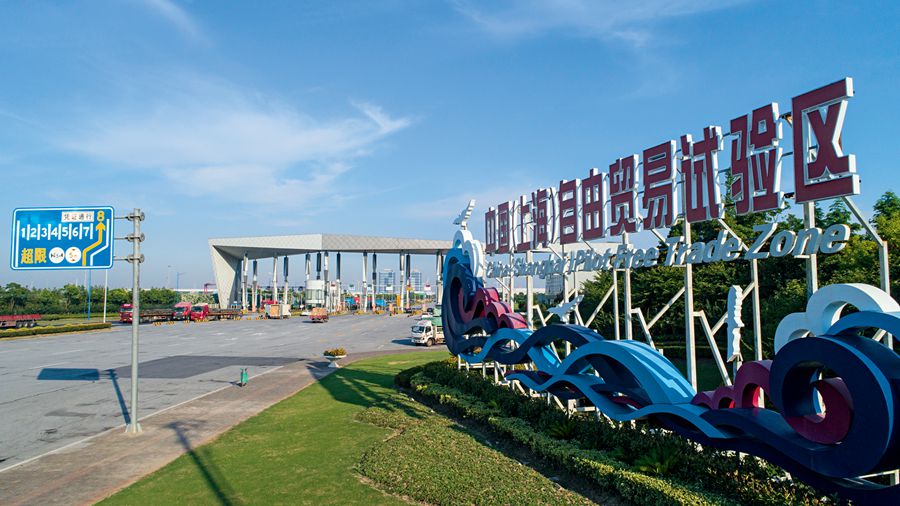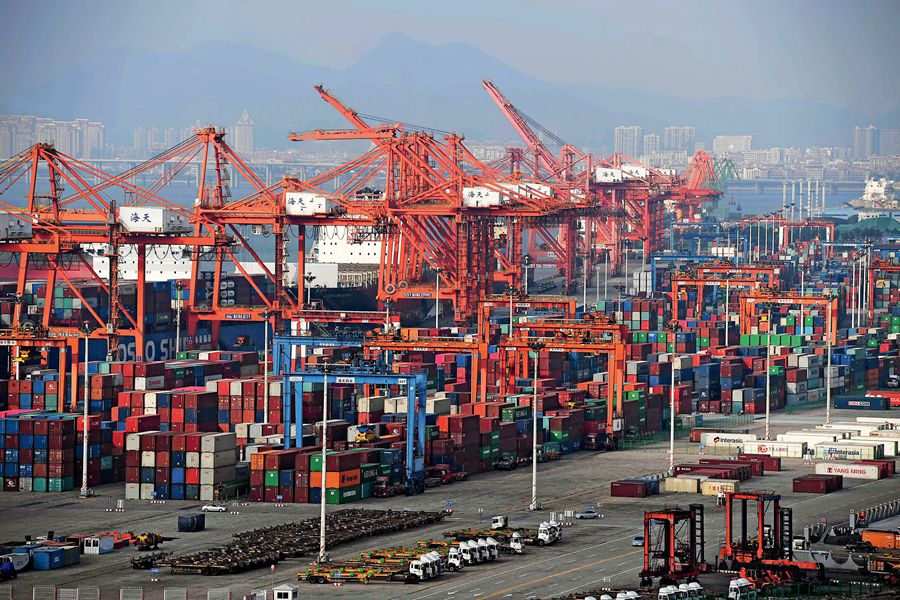CONSTRUCTION of Pilot Free Trade Zones (PFTZs) is a strategic measure of China’s reform and opening-up policy. Since the 18th National Congress of the Communist Party of China (CPC), it has taken the policy’s effectiveness to new heights.
Expanding Opening-up
Forty years ago, China began to set up special economic zones in Shenzhen, Zhuhai, Shantou, and Xiamen, as “testing grounds” for China’s reform and “windows” for its opening-up. At the Boao Forum for Asia Annual Conference in 2018, Chinese President Xi Jinping pointed out that opening-up was key to China’s economic growth over the past four decades, and in the same vein, high-quality development of China’s economy in the future can only be achieved with greater openness.
Since the 18th National Congress of the CPC, the PFTZs have become pilot areas for China’s institutional innovation in the new era, the areas to experiment in globally competitive projects, as well as an important measure to promote China’s reform and opening-up. Different from the special economic zones and the subsequent development zones and high-tech zones, the PFTZs are not aimed at attracting foreign investment by preferential policies such as tariff reduction and exemption, but are rather committed to creating a high standard of institutional innovation.
Institutional Innovation
Over the past five years, the PFTZs have been continuously exploring institutional innovations, and conducting first-hand trials and breakthroughs which have seen remarkable progress.

The signboard of the Yangshan Free Trade Port Area of China (Shanghai) Pilot Free Trade Zone.
In terms of market access rules, the PFTZs have greatly expanded investment access and improved the management system for pre-establishment national treatment and negative lists. The 2018 Edition of the Special Administrative Measures (Negative List) for Foreign Investment Access in Pilot Free Trade Zones has been shortened from 95 items in 2017 to 45 items, greatly relaxing market access restrictions in the fields of agriculture, mining, manufacturing, culture, finance, and telecommunications.
In terms of trade facilitation rules, the PFTZs further increase the level of facilitation by introducing “one-stop service.” For example, the Shanghai PFTZ has improved customs clearance efficiency and reduced corporate costs. The Fujian PFTZ has set up one platform to handle various demands of international trade. The Tianjin PFTZ launched a new model for the integration of inspection and quarantine in the Beijing-Tianjin-Hebei region, which makes customs clearance easier and boosts the coordinated development of the Beijing-Tianjin-Hebei region.
The PFTZs have continuously explored investment management systems and methods that are adapted to the new trends in development. For example, the Fujian PFTZ has launched an investment management system reform, which significantly simplifies the review and approval process for investment projects from factory site selection to construction, greatly improving the administrative efficiency.
In terms of supervisory regulations, the PFTZs focus on transforming government functions, optimizing the approval process, and improving supervision systems, especially in adopting innovative technologies. For instance, the Guangdong PFTZ explores a new model of cross-border e-commerce supervision. By simplifying port links, strengthening supervision, and building a quality traceability system, it conducts closed-loop supervision and management on advance evaluation, filing, third-party testing, and ex post facto accountability, which promotes the rapid development of cross-border e-commerce.
To push forward the reform, PFTZs have continued to clarify the relationship between the government and the market through institutional innovation and promote the transformation of government functions. For example, the Shanghai PFTZ has carried out a pilot reform of its examination and approval methods as well as strengthening supervision, which has made it easier and more efficient for enterprises to apply for certificates. This will in turn help to modernize government management methods and strengthen the role of market forces.

Just another day at the bustling Dongdu Port Area of Fujian Pilot Free Trade Zone.
According to the report of the 19th CPC National Congress, PFTZs will be given greater autonomy in reform and explorations; and will be allowed to build free trade ports. Chinese Premier Li Keqiang said China must focus on solving deep-seated contradictions and structural problems, strengthen reform planning and system integration, continue to pay close attention to institutional innovation, and accelerate the formation of new advantages in development and competition. In the future, the various PFTZs will better adapt themselves to international trade and investment rules, accelerate the formation of a law-based, globalized, and convenient business environment, and create open economic innovation zones and demonstration zones.
Building Regional Features and Advantages
Construction of the PFTZs took into account the characteristics of different provinces and cities. Diversified measures were devised, and pilot programs with different characteristics and different emphases were formulated.
The Shanghai PFTZ is a comprehensive reform pilot zone that integrates openness and innovation: it strengthens the risk control and pressure testing for establishing an open economy, further enhances the governance capacity, updates the cooperative development model, and serves the construction of the Belt and Road and the strategy of going global. Meanwhile, the Shanghai PFTZ has strengthened its interconnection with Shanghai’s reform.
The Guangdong PFTZ focuses on building a fair and honest legal environment, building a demonstration model for the financial industry to open up to the outside world, and creating a cooperation demonstration area for the Guangdong-Hong Kong-Macao Greater Bay Area. The Tianjin PFTZ focuses on the market allocation mechanism of innovative elements, promoting the incubation of cutting-edge and emerging technologies, and building a demonstration area for coordinated development of the Beijing-Tianjin-Hebei Region. The Fujian PFTZ focuses on building a high-standard international business environment, promoting the standardization and transparency of government services, and building the core area of the 21st Century Maritime Silk Road.
The third batch of PFTZs (seven of them) explore different pilot tasks according to their own characteristics. For example, the Liaoning PFTZ deepens the reform of state-owned assets and state-owned enterprises; the Zhejiang PFTZ focuses on building an international maritime service base and an international oil storage and transportation base to promote foreign trade; the Henan PFTZ builds an international transportation logistics channel to reduce transportation costs; the Hubei PFTZ focuses on promoting strategic docking between the central region and the Yangtze River Economic Belt and related industrial upgrading; the Chongqing PFTZ focuses on promoting the linked development between the Belt and Road Initiative and the Yangtze River Economic Belt; the Sichuan PFTZ aims to promote the coordinated development of inland and coastal areas; and the Shaanxi PFTZ is devoted to innovating modern agricultural exchanges and cooperation mechanisms, and expanding cooperation with countries along the Belt and Road.
The Hainan PFTZ, which was approved by the State Council in October 2018, highlights local characteristics in the fields of medical care and health, culture and tourism, and green development. At the same time, it explores a new model of ecological development, and strengthens major risk prevention and control systems and mechanisms such as port risks.
The institutional innovations of PFTZs and promotion of their experience have achieved positive results, leading to significant improvements in China’s business environment. According to “Doing Business 2019” by the World Bank, China’s global ranking jumped from the 78th in the previous year to 46th, with outstanding progress in seven categories, such as starting a business, obtaining construction permits, electricity supply, paying taxes, and cross-border trade. This is an objective affirmation of the speed and effectiveness of China’s reforms.
GENG NAN is an associate research fellow at the Chinese Academy of International Trade and Economic Cooperation of the Ministry of Commerce.

